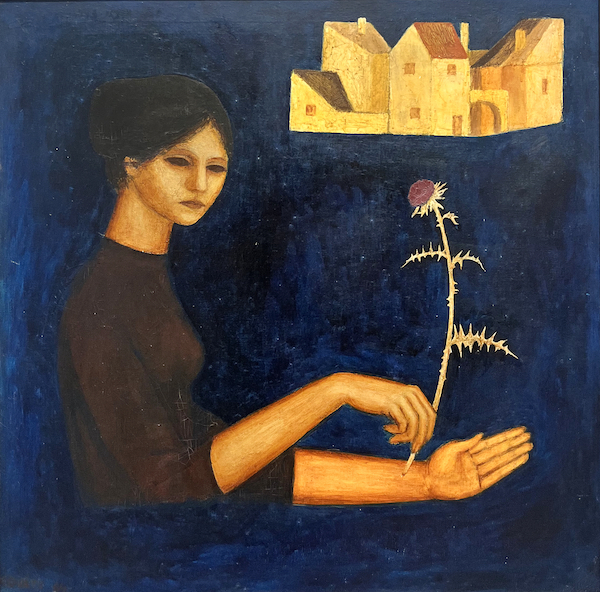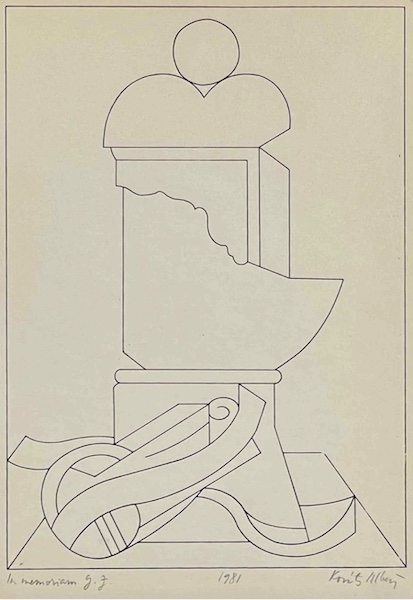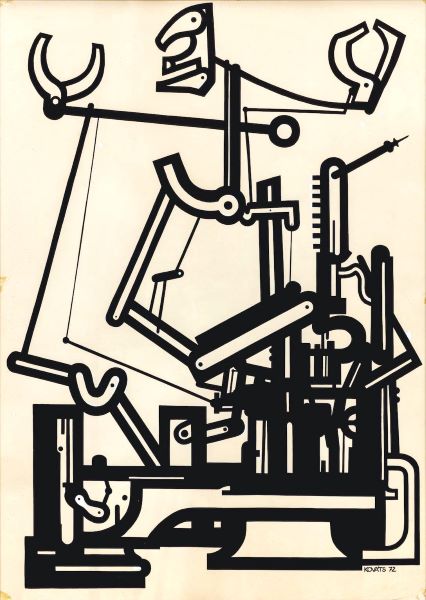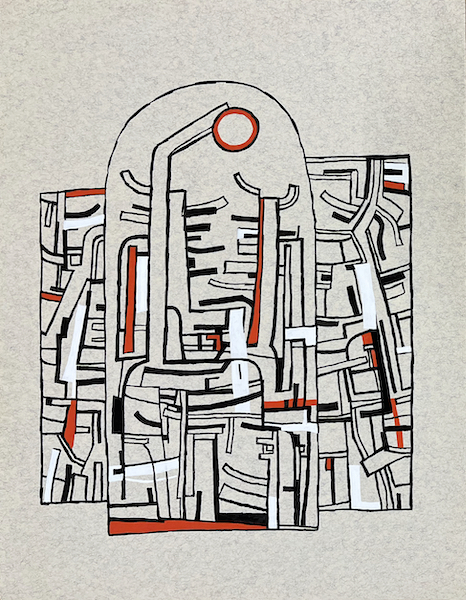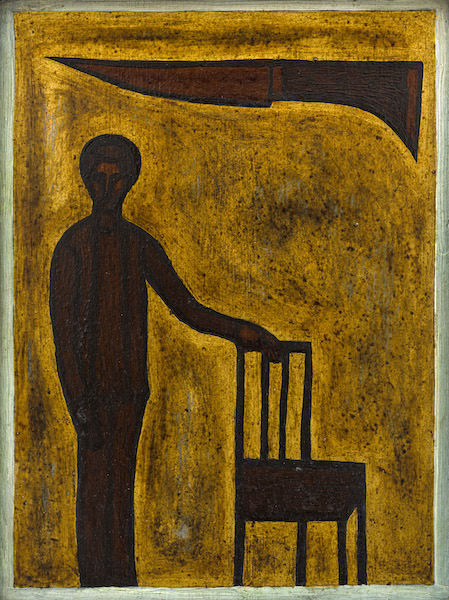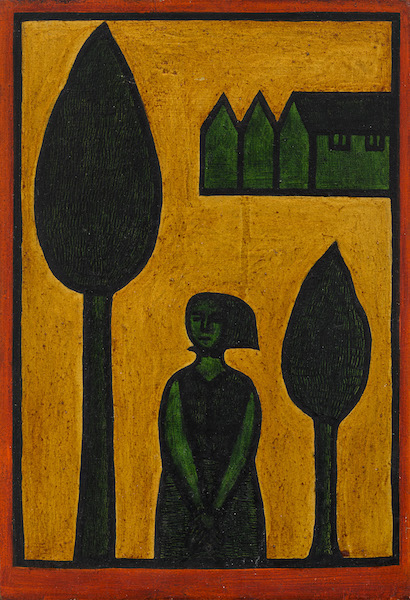Biography
The painter Albert Kováts studied at independent art schools in the fifties. During his painting studies, he spent two years in prison after the 1956 revolution as a retaliation for his participation. Initially, he worked as an unskilled worker. He has been an exhibiting artist since 1961. His early works were quiet, static, iconic images, and he paid tribute to the memory of Lajos Vajda as an intellectual demonstration.
Above the magical landscapes painted in the late 1960s, the spirit of Vajda and Paul Klee hovered, and his first big theme, King Übü, first swung in his 1967 “Father of Übü”. But in the interpretation of the title character of Jarry's student joke grotesque, he became the Dictator's puppet of the Kádár era, pregnant with dark crosstalk, and rising into an iconic pose.
Between 1980 and 1985, he made collages: most of the time he attached the collage elements to a fine, balanced white line drawing on a black background. They suggest mystical palace interiors, fragments of the walls of dead cities, and their dashed forms act as visual screams on disciplined line planes. His “precise surrealism” of pure, cool, musical effect (Éva Forgács) is enriched with grotesque elements in the collage pages of his Übü mythology. He composes the ominous “Black Umb” from plastic, floating pieces of black-and-gray material, the glassy, faceless, mountain-shaped Ubü from vibrant book strips, and his enigmatic Self-Portrait Ubü on the empty eye socket - which is perhaps even more dictatorial peace: black glasses.
After 1985, he returned to drawing and painting. In the late 80s, in the 90s, he often worked with a pipe pen, mixed media, on fiberboard. His favorite compositional element is the artistic-drawing, large enclosing form, and within his contour a fantastic journey begins in a meticulously crafted, unlikely landscape. With whimsical lines, dots, dots, and a multitude of fibrous lines, we write on them something that could be a field chessboard viewed from an airplane, an archaeological excavation, or the hustle and bustle of microorganisms in a drop of water. When “read together,” it can all turn into a feathered hat profile: XX. turn the head of Arcimboldo at the end of the century or into a new, mysterious being. Starting from the intellectual radiance of Vojvodina and Kafka surrealism, Kováts arrived at a kind of intellectual, pensive, elegant absurdity, a finely edited, organic surrealism. On its vibrant, live images, the art of old times blends with the thrill of staying on the moon. In addition to his painting work, he has been writing and publishing articles related to fine arts and urban history since 1991.

